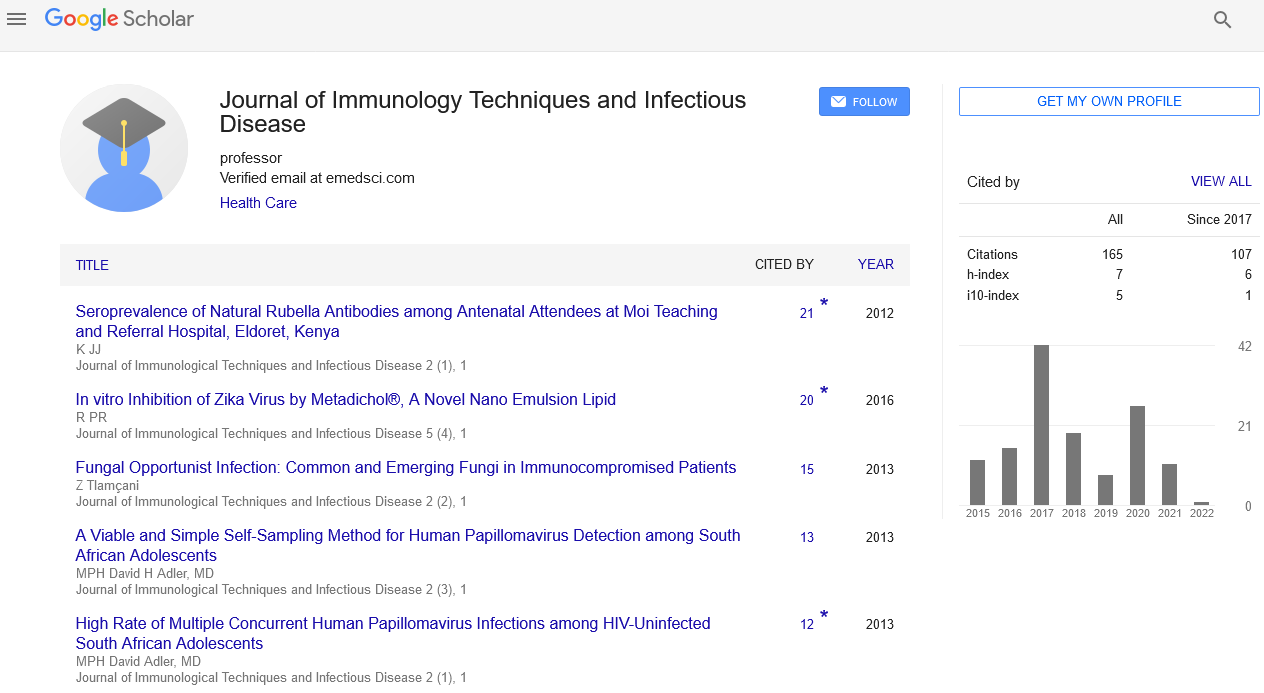Automated hand hygiene compliance system associated with improved monitoring of hand hygiene
Saungi McCalla
White Plains Hospital, USA
: J Immunol Tech Infect Dis
Abstract
Statement of the problem: Healthcare-associated infections (HAIs) are a substantial concern in US hospitals. Approximately one in 25 patients in the US has at least one HAI during a hospital stay and an estimated 80,000 people die annually in the US from an HAI. Consistent hand hygiene is key to reducing healthcare-associated infections (HAIs) and assessing compliance with hand hygiene protocols is vital for hospital infection control staff. The conventional approach is to employ a team of observers who can record hand hygiene opportunities (HHOs) and the number of times caregivers comply with protocol. However, relying on human observation has limitations. The purpose of this study is to determine if implementation of the automated HHCS is associated with improved hand hygiene compliance and a significant reduction in MDROs, CLABSIs, and CAUTIs in the hospital’s ICU and ICU stepdown unit compared to the use of human observers. Methodology: Using a retrospective cohort design, researchers investigated whether implementation of the HHCS resulted in improved hand hygiene compliance and a reduction in common HAI rates. Pearson Chi-square tests were used to assess changes in compliance, and incidence rate ratios were used to test for significant differences in infection rates. Results: During the study period, the HHCS collected many more hand hygiene events compared to human observers (632,404 vs 480) and ensured that the hospital met its compliance goals (95%+). While decreases in MDRO, CLABSI, and CAUTI infection rates were observed, they represented non-significant differences. Discussion & Conclusions: Human hand hygiene observers may not report accurate measures of compliance. The HHCS is a promising new tool for fine-grained assessment of hand hygiene compliance. Further study is needed to examine the association between the HHCS and HAI rate reduction.
Biography
Saungi McCalla is Registered Nurse for over 24 years and has been working in Infection Prevention and Control for 16 years. She is board certified in Infection Control. She is currently the Director of Infection Prevention and Control at Community Hospital in Westchester County, New York. She is passionate about her role in infection prevention and the impact it has on staff, patients and visitors, and work hard to be an advocate and to lead by example. She considers herself a change agent and will collaborate with all key players to implement evidenced-based in initiatives that will yield positive outcomes. She has also authored articles including a white paper on topics related to infection prevention and patient safety. In addition, she has been accepted as a Fellow of the Association for Professionals in Infection Control and Epidemiology (APIC). She was the proud recipient of the 2014 APIC Chapter Leadership Award presented at APIC National.
 Spanish
Spanish  Chinese
Chinese  Russian
Russian  German
German  French
French  Japanese
Japanese  Portuguese
Portuguese  Hindi
Hindi 
